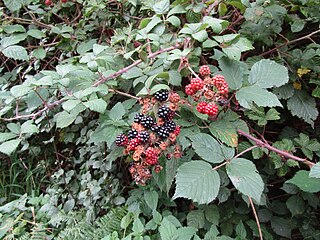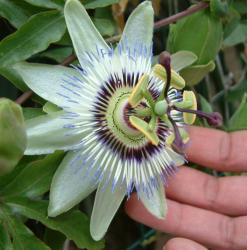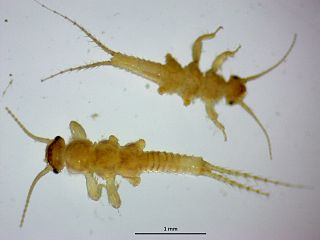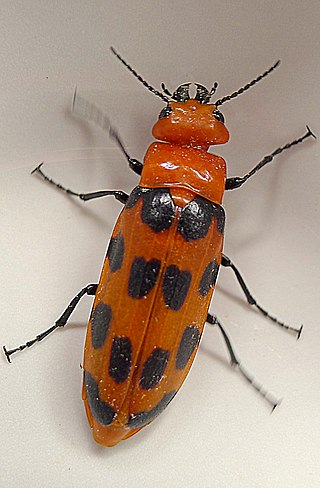
Genus is a taxonomic rank above species and below family as used in the biological classification of living and fossil organisms as well as viruses. In binomial nomenclature, the genus name forms the first part of the binomial species name for each species within the genus.

Rubus is a large and diverse genus of flowering plants in the rose family, Rosaceae, subfamily Rosoideae, commonly known as brambles. Fruits of various species are known as raspberries, blackberries, dewberries, and bristleberries. It is a diverse genus, with the estimated number of Rubus species varying from 250 to over 1000, found across all continents except Antarctica.

Convolvulaceae, commonly called the bindweeds or morning glories, is a family of about 60 genera and more than 1,650 species. These species are primarily herbaceous vines, but also include trees, shrubs and herbs. The tubers of several species are edible, the best known of which is the sweet potato.

Plantaginaceae, the plantain family or veronica family, is a large, diverse family of flowering plants in the order Lamiales that includes common flowers such as snapdragon and foxglove. It is unrelated to the banana-like fruit also called "plantain". In older classifications, Plantaginaceae was the only family of the order Plantaginales, but numerous phylogenetic studies, summarized by the Angiosperm Phylogeny Group, have demonstrated that this taxon should be included within Lamiales.

The Passifloraceae are a family of flowering plants, containing about 750 species classified in around 27 genera.

Nyctaginaceae, the four o'clock family, is a family of around 33 genera and 290 species of flowering plants, widely distributed in tropical and subtropical regions, with a few representatives in temperate regions. The family has a distinctive fruit type called an accessory fruit or anthocarp, and many genera have extremely large pollen grains.
Popayanita is a genus of moths belonging to the family Tortricidae.
Popayanita ptycta is a species of moth of the family Tortricidae. It is found in Colombia.
Antaeotricha ptycta is a species of moth of the family Depressariidae. It is found in Guatemala, Panama, Ecuador, the West Indies and Guyana.

Ochthebius is a genus of minute moss beetles in the family Hydraenidae. There are at least 460 described species in Ochthebius.

Thanatophilus is a genus of carrion beetles in the family Silphidae. There are about 12 described species in Thanatophilus.
Elipsocus is a genus of damp barklice in the family Elipsocidae. There are more than 20 described species in Elipsocus.

Nemoura is a genus of spring stoneflies in the family Nemouridae. There are more than 190 described species in Nemoura.

Stilobezzia is a genus of predaceous midges in the family Ceratopogonidae. There are more than 330 described species in Stilobezzia.

Xeralictus is a genus of sweat bees in the family Halictidae. There are at least three described species in Xeralictus.

Pseudopamera is a genus of dirt-colored seed bugs in the family Rhyparochromidae. There are about nine described species in Pseudopamera.

Pseudopachybrachius is a genus of dirt-colored seed bugs in the family Rhyparochromidae. There are about eight described species in Pseudopachybrachius.

Cissites is a genus of blister beetles in the family Meloidae. There are at least four described species in Cissites.

Ptycta polluta is a species of common barklouse in the family Psocidae. It is found in Central America and North America.

Ceroplastes is a genus of wax scales in the family Coccidae. There are more than 130 described species in Ceroplastes.
















